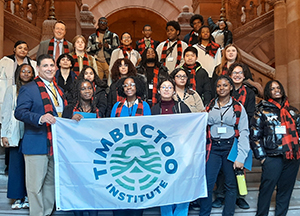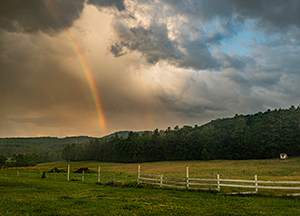
Adirondack Council Urges Swift Action on New State Road Salt Report
Report is Result of Many Years’ Work Getting State to Acknowledge, Act on Problem
Wednesday, September 9, 2023
ALBANY, N.Y. – The Adirondack Council hailed the release of a NYS Dept. of Transportation Adirondack Road Salt Task Force Report today and urged swift action to implement road salt-reduction strategies to protect Adirondack lakes and rivers as well as underground water supplies.
The 27-page report identifies and attempts to solve the problems associated with the state’s use of road salt to remove ice and snow from Adirondack highways in the winter months.
The problem is most acute in the Adirondacks, where winters are longer and colder than the rest of the state. The half-public/half-private Adirondack Park contains thousands of miles of steep, winding rural roads running between more than 11,000 lakes and ponds and 30,000 miles of rivers and streams. Nearly all of the park’s 121 hamlets and nine villages are located next to a lake, pond, river or stream. Most of the state’s rarest and most sensitive wildlife habitat is located inside the Adirondack Park.
“The release of this report is a major step forward for the protection of pure waters in the Adirondacks and beyond,” said Adirondack Council Executive Director Raul J. Aguirre. “The Adirondack Council has looked forward to this day since 2009, when we issued a plea for state government to take action called ‘Low-Sodium Diet: Curbing New York’s Appetite for Damaging Road Salt.’ Since then, we have hosted multiple conferences, issued additional reports, and worked with partners to guide the passage of the legislation that created this task force. Someday, the lessons learned here will be applied to other sensitive locations around the state.”
The next step is to turn encouraging words into effective action, he said.
“We’re eager to learn more about the state’s plan to implement the recommendations from this report,” said Adirondack Council Director of Government Relations Kevin Chlad. “Rather than leave this task to already overburdened current state agency personnel alone, we believe the Governor can ensure swifter action by appointing an oversight committee of citizens and agency personnel who would work together to implement the task force’s recommendations.”
Chlad said he understood that what the Council was asking of the Department of Transportation was not an easy task.
“We know they have a responsibility to keep the roads safe for travel,” Chlad said. “We also know there is a limit to the amount of salt you can dump into a watershed before damage occurs. We didn’t know what that limit was when New York started using road salt here. Thanks to the task force, we know a lot more now. It’s time to act on that knowledge and save what has not yet been lost.”
New York transportation officials have used more than six million tons of road salt on Adirondack highways since the practice began in 1980. According to Adirondack researchers, contamination appears to be worst near state highways. DOT has settled a number of lawsuits alleging contamination of residential and commercial wells from road salt stored nearby or applied to roads adjacent to the properties.
Sodium in drinking water poses significant health risks, especially for those with high blood pressure. Sodium and chlorides in lakes and rivers can harm forest growth, fish and wildlife. Salt is corrosive to automobiles, bridges, guiderails, buildings and monuments.
As the report’s executive summary explains:
Through its investigations, the Task Force found … regulatory guideline exceedances were identified which could result in impacts to human health and the environment. Task Force members with subject matter expertise also found that more recent scientific literature … may indicate existing water quality standards are not protective enough to prevent impacts to the Adirondack Park’s sensitive natural resources and ecosystem. Therefore, more protective limitations specific to the Adirondack Park may be required to prevent further deterioration to the region’s water quality, wildlife, and the environment.
The report’s summary also noted that solutions are at hand: “... the Task Force found that state-of-the-art techniques for winter road management were continuously improving with new technologies and programs becoming available and being applied in various locations.”
The report recommended seven action steps, including new reduction targets, best management practices, improved training for plow drivers, better funding, public access to data on salt applications, education campaigns, and rapid responses to reports of water contamination.
It also recommended several pilot projects, including those that would manage ‘Cold Spots’ on roadways; establish Chloride Free Zone(s), create Seasonal Speed Warnings and measure salt levels on private properties to develop a benchmark for future salt reduction.
“Overall, we like the general drift of the report,” said Chlad. “However, it is long and complex. We will spend a couple of days poring over its details and comparing it to previous drafts. After 14 years, this still isn’t the end of the process. We are only just beginning.”
Established in 1975, the Adirondack Council is a privately funded not-for-profit organization whose mission is to ensure the ecological integrity and wild character of the Adirondack Park. It is the largest environmental organization whose sole focus is the Adirondacks.
The Council carries out its mission through research, education, advocacy and legal action. It envisions a Park with clean water and clean air, core wilderness areas, farms and working forests, and vibrant, diverse, welcoming, safe communities. Adirondack Council advocates live in all 50 United States.
For more information: John Sheehan, Adirondack Council, 518-441-1340




